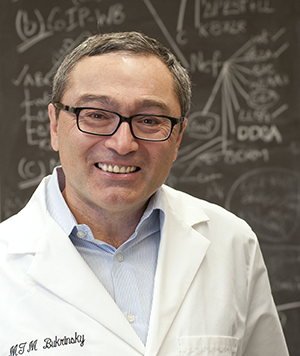Prions — a blur of the words protein and infectious — are self-replicating clumps of proteins that can lead to a host of neurological disorders. The relationship between cholesterol metabolism and prion infection, however, also bears a striking resemblance to that of HIV and cholesterol. New research published in the Journal of Biological Chemistry by GW School of Medicine and Health Sciences (SMHS) researcher Michael Bukrinsky, M.D., Ph.D., shows striking similarities in the way the two diseases metabolize cholesterol.

Bukrinsky, a professor of microbiology, immunology, and tropical medicine, and his research team identified a relationship between impairment of cellular cholesterol transporter ABCA1 and the conversion of prions into the diseased form, which occurs in membrane domains of neuronal cells or “lipid rafts.”
“The effect of prions on ABCA1 and lipid rafts is very similar to what we found with HIV before, suggesting that while prions and viruses are very different, they seem to target the same cellular mechanism of cholesterol metabolism,” says Bukrinsky. “This mechanism may be key to controlling many different diseases. It may be that drugs that stimulate ABCA1 can help not only to target prions and HIV, but also a number of other pathogens.”
Bukrinsky and his research team found that brain cells loaded with lipids are actually less likely to be susceptible to prion disease. When neuronal cells are loaded with cholesterol, it counteracts this effect of prions on ABCA1 and lipid metabolism. While in most circumstances having a high-fat diet is a prescription for trouble, this finding suggests that fats and lipids can actually prevent prion disease. “This isn’t a recommendation, as we are talking about a very specific cell type and under special circumstances,” cautions Bukrinsky, “but it’s an interesting possibility.”



